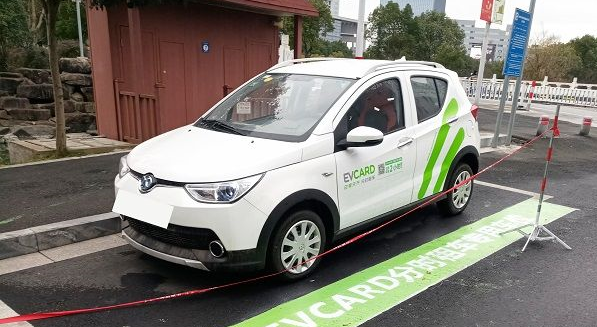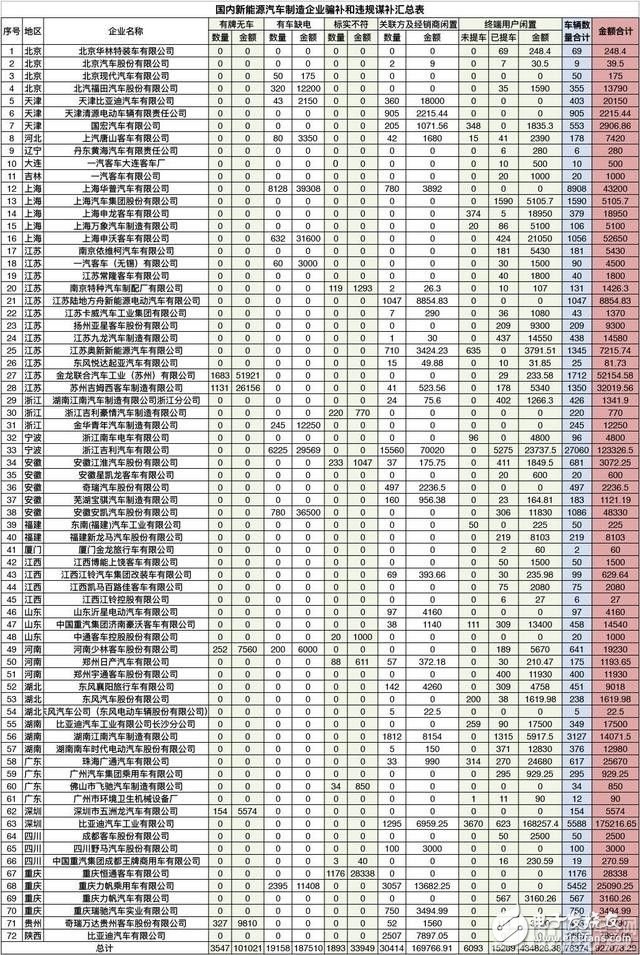“Starting again, the survival of the fittest in the change.†A related person of an electric commercial vehicle company recently sent the same feelings at the same time as the announcement of the Ministry of Industry and Information Technology. On June 6, the Ministry of Industry and Information Technology issued the 308th batch of "Road Motor Vehicle Manufacturing Enterprises and Products Announcement" (hereinafter referred to as "Announcement"). In this batch of announcements, the "Recommended Models for Promotion and Application of New Energy Vehicles (6th Batch in 2018) was released. â€, a total of 353 models of 112 enterprises, including 324 models of pure electric products, plug-in hybrid products, 24 models of 8 enterprises, and fuel cell products, 4 models and 5 models.

In accordance with the "Notice on Adjusting and Improving the Financial Subsidy Policy for the Promotion and Application of New Energy Vehicles" (Cai Jian [2018] No. 18), the policy transition period will end on June 11, 2018. From June 12, 2018, the first to the 12th batches in 2017 and the first to fourth batches of the "Recommended Models Catalogue" in 2018 will be abolished. New energy vehicles must meet new technical requirements in order to enter the new catalog. Compared with the previous, the new technology requires higher and stricter mileage, 100-kilometer energy consumption and comprehensive indicators in all aspects.
It seems to be an upgrade of technical requirements, but for the enterprise, in addition to the ability to continuously upgrade iterations in technology, it also involves organizational costs and the ability to flexibly regulate the market. "A product must be obtained for listing, and must obtain three certificates (announcement, catalogue, exemption). Behind each certificate, all kinds of certifications will be involved. These are costs." The above-mentioned car companies told The first financial reporter, he gave an example, for example, a single battery life upgrade, if it involves the verification of battery replacement, the cost of one item needs millions. In addition, it takes time to test the certification and the calibration of the test. For the upgrade of the model to be sold, if the upgrade is not completed, there will be a situation in which the market will not be connected.
Therefore, it seems that it is only an upgrade of technical standards, and behind it is a comprehensive test of the entire system operation capability and large-scale market capability of new energy production enterprises. Since the government strongly supported new energy vehicles in 2013. The subsidy policy has always been explored on the move. As the market maturity is getting higher and higher, the intention of the policy “survival of the fittest†is becoming more and more obvious.

As early as February of this year, the Ministry of Finance officially issued a notice on the adjustment and improvement of the financial subsidy policy for the promotion and application of new energy vehicles on its official website. In terms of technical standards, passenger cars, buses and special vehicles All have been upgraded.
For passenger cars: The passenger car is classified into five grades. The first is to encourage the promotion of products with high density, high energy density and long endurance. The second is to cancel the subsidy zone below 150 kilometers, increase the interval of more than 250 kilometers, and the trend of high-end models is obvious. The third is the A0 and A00 models with a cruising range of 150~200km. The transition subsidy is from February to June, and the subsidy will be cancelled after June. For new energy buses and special vehicles, there are different upgrade requirements in terms of technical standards.
In order to give the car companies a certain buffer period, the policy stipulates that the new energy passenger cars and new energy buses on the licensing period from February 12, 2018 to June 11, 2018 will be subsidized 0.7 times according to the previous corresponding standards. Energy trucks and special vehicles are subsidized by 0.4 times, and fuel cell vehicle subsidy standards remain unchanged.
Overall, the standard upgrade has the greatest impact on passenger cars and special vehicles, followed by models with a range of 150km to 200km. Ye Lei, deputy chief engineer of new energy vehicles at Chongqing Vehicle Inspection Institute Co., Ltd., said at the Global Automotive Forum. For passenger cars, in the field of fast charging, since the ternary battery has not been lifted, in the central laboratory, most of the current experimental data of battery energy density are below 135 (Wh/kg), so the subsidy quota for most models. It will be nearly 33% off the slope. For hybrid cars, based on current levels, the fuel economy is hard to exceed 65%, and most models are around 60%. In the field of trucks. He said: "The adjustment of subsidies for new energy vehicles, the most serious loss in the special vehicle sector, basically in the special vehicle of 30kWh, the subsidy fell by 43%."
According to the new policy, the total amount of subsidies for new energy buses will be adjusted from no more than 300,000 yuan to no more than 180,000 yuan. The system energy density increased from 85 Wh/kg to 115 Wh/kg. The subsidies for new energy trucks and special vehicles fell the most, the maximum ceiling was reduced from 200,000 yuan to 100,000 yuan, and the energy density of the power battery system was increased from 90Wh/kg to 115Wh/kg.
That is to say, after the subsidy policy adjustment of the new energy special vehicle, the amount of the central government subsidy single vehicle is not more than 100,000 yuan, and the subsidy of the central and local subsidies is not higher than 1:0.5. Only about 150,000 yuan.
“It is a challenge for many special-purpose vehicle manufacturers.†The above-mentioned car dealers believe that he told reporters that there are not many commercial vehicles, especially special-purpose vehicles, that can meet the new standards. The model is a declared catalogue, and no car is sold.†This means that if it is not possible to adjust according to the new policy requirements, then millions of trials, calibrations, etc., have been invested in these vehicles. They will all be "floating."
Manufacturers pay for themselves“The catalogue adjustment has an impact on all enterprises. In addition to the cost, the workload has also increased a lot.†Another insider of the passenger car company told reporters, for example, the catalogue declaration, because the policy has been in the past two years. It is in the process of change, so the materials and content of each declaration will be different. Sometimes, in order to complete the declaration as soon as possible, the car companies have to work overtime and even help from other departments.
However, compared with the previous one, this policy gives some humanized regulations and further simplifies the declaration of the catalogue: the models in the 2017 catalogue that meet the technical conditions of the adjusted subsidies can be directly included in the new catalogue; local government New energy vehicles shall not be required to be repeatedly inspected; new energy automobile products listed in the "Vehicle Production Enterprises and Products Announcement" shall be treated as supportive measures such as exemption, no-limit purchase, and issuance of special license plates for new energy vehicles. That is to say, the vehicles that meet the standards do not need to go through the second declaration, and the vehicles that fail to meet the standards can only get all the “passports†required for listing.
On May 22, the 307th batch of "Road Motor Vehicle Manufacturers and Products Announcement" issued by the Ministry of Industry and Information Technology stated that since 2017, the Ministry of Industry and Information Technology has issued 16 batches of recommended models according to the old standards, including 3,716 of 237 enterprises. Model.
According to Cui Dongshu, secretary general of the National Federation of the Federation, 497 of these models are passenger cars. The number of vehicles passing the new standard reached 348, and the compliance rate reached 70%, but the compliance rate of passenger cars and special vehicles was only 56% and 42%. Among the passenger car manufacturers, SAIC has 14 models in the catalogue in 2018, all of which are up to standard; BYD has 39 models, 30 of which have passed, and Changan and Dongfeng have performed better, while Beiqi and Geely have relatively low pass rates. .
For these companies, if they want to continue selling cars, they will involve new reporting issues. According to the reporter's understanding, "Some dealers have already distributed goods before the car, or they just want to find a way to sell during the transition period from February to June. Otherwise, there will be no models for clearing the warehouse at the end of the transition period. Buy, then come back and replace the battery." For many companies, for some models that are not so big, they would rather choose a low-cost or self-sufficient way to subsidize, and are not willing to buy back.
In May, the new energy vehicle market was hot. The sales volume reached 92,000 units, an increase of 30% from April and a year-on-year increase of 140%. From January to May, sales of new energy passenger vehicles reached 280,000 units, a year-on-year increase of 1.4 times. In May, the traditional fuel vehicle retail sales growth rate was only 0.5%.
Cui Dongshu analyzed that this has something to do with subsidy changes. He said that the entry-level A00-class electric vehicles after the new subsidy policy in February faced pressure to significantly reduce subsidies, so the A00-level growth in March-May was very strong, and the performance of BAIC New Energy was super strong.
At the same time, the transitional subsidies also have a certain impact on the market sales of high-end vehicles. Take Geely as an example. For example, the Emgrand EV450 (with a cruising range of 450km), if the vehicle is subsidized according to the 2017 national subsidy, the subsidy standard is 44,000. Yuan; However, during the transition period from February 12 to June 11, the subsidy was only 30,800 yuan, a difference of 13,200 yuan. In order to seize the market, Geely chose to pay for its own pockets.
Similar to the Geely situation, BAIC New Energy also chose to “sell its own pockets†to subsidize consumers when new cars are launched, in order to solve the situation that there is no local subsidy in some areas in exchange for market and scale. For car companies, these are new funding needs. In the context of the fact that there is currently no new energy vehicle for a car company that is actually going to mass sales, the funds have indeed caused some pressure on some weak car companies.
According to the reporter's understanding, Daimler and BYD each increased their capital by 500 million yuan last year, which unpacked the joint venture new energy companies. Recently, Daimler and BYD have each increased their capital by 400 million yuan, and they have gained another 800 million yuan in investment.
Optical Rotary Sensor,Custom Encoder,Optical Encoder 6Mm Shaft,Handwheel Pulse Generator
Jilin Lander Intelligent Technology Co., Ltd , https://www.jilinlandermotor.com